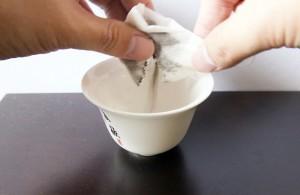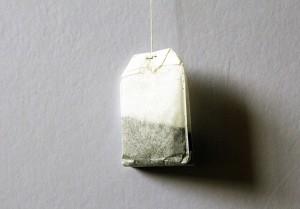It’s not hard to understand the allure of tea bags, it is convenient. Use a regular mug, throw it in and douse it with boiling water. A couple of minutes later, it’s ready. When it comes to washing up, just throw the bag in the bin and wash the mug. Simple as it gets.
The only thing hampering it from being a brilliant life changing idea is the quality of brew derived from it, after all what good is convenience when the end product is underwhelming.
Let us take a look at why it is virtually impossible to get a brilliant brew out of a bag:
Dust to Dust

Whole tea leaves will unfurl to release more flavors over multiple infusions and provide a multi-faceted experience while dust is probably good for one strong (and often harsh) steep.
This is further accentuated by the fact that good quality leaves are hardly ever used for dust since the price that it can command is far lower. One of the ways connoisseurs assess the value of tea leaves is from its appearances when dry and wet to determine production quality, shine and freshness.
These are not possible when you are assessing dust and hence there is no motivation for consumers to pay premium prices for dust and by the same token even less motivation for producers employ quality raw materials.
Storage

Oxygen as we have discussed previously is one of the key elements to avoid in storing tea. Increasing the contact area has the effect of accelerating the oxygen induced deterioration.
This is further accentuated by the fact that most tea bags are packed in paper boxes and wrapped with a material that is not rigidly airtight and somewhat flimsy.
Another element to avoid is light. Most boxes are not entirely light-proof and placed under the bright lights of store shelves. Even worse, there are some designs that partially exposed the tea leaves to light, good for aesthetics but terrible for leaf storage.
The end result is that an already unimpressive product quickly gets worse.
Brewing Methods
Another key element why a tea bag does not lend itself to good tasting tea is brewing methods. As mentioned, a tea bag is all about convenience. That means a mug and a bag.
No gaiwan or Yixing pot. No one ever Gongfu brews with a bag- the entire notion is asinine anyway- and as we discussed in this article, there is a big difference between Gongfu brewing and conventional brewing in terms of quality of tea.
Furthermore, the natural instinct is to leave the bag in the mug.
As semi-experienced tea drinkers would know, over-steeping often lends itself to bitterness and astringency. For all its convenience, the mug and tea bag combo does not have a ready solution for placing the bag.
So what do you get when you use mediocre raw material, allow it to deteriorate quickly and fail to bring out the best of it in brewing?
Of course there are occasions where it is not practical to brew loose leaf tea but when you get accustomed to the taste of loose leaf tea, either you will think of ways to enjoy loose leaf tea everywhere or take on a ‘whole leaf or bust’ mentality.
When you inevitably need to settle for the bag, remember that tea in this case is not the true tea that deserves your love.
One more thing, black tea generally survive better in tea bags than green tea since freshness and shelf life is less of an issue so if you ever NEED to drink tea bag, at least drink black tea.
